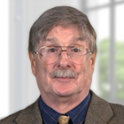Playlist
Show Playlist
Hide Playlist
Accumulating Macrophages in the Tissue
-
Slides Acute and Chronic Inflammation Recruitment of Macrophages.pdf
-
Reference List Pathology.pdf
-
Download Lecture Overview
00:00 So, M1 macrophages. 00:03 They have a greater capacity to kill. 00:05 They have more lysosomes. 00:07 They have a greater oxidative burst. 00:09 They make more reactive oxygen species. 00:11 They make more nitric oxide. 00:13 So as they say, they are lean, mean fighting machine. 00:16 And they also make a lot of other pro-inflammatory mediators coming from arachidonic acid. 00:22 So those are the eicosanoids and the other mediators. 00:24 That's the M1 population. 00:26 The M2 population is going to be important for regulating, healing, and scar formation. 00:31 They are going to make coagulation factors. 00:33 They're going to make angiogenic factors. 00:35 And they're going to make collagenases and protease inhibitors that will allow a scar to form. 00:43 Together, the M1 and M2 populations orchestrate the local cell proliferation activation by elaborating a number of cytokines. 00:52 So in this <inaudible>, in this kind of collection of inflammatory cells that get recruited after the acute phase, there's a lot going on. 01:01 And it's kind of a sequence between the M1s killing, cleaning things up in the M2s healing, and turning things off. 01:11 Alright, so let's accumulate the macrophages into the tissue. 01:14 We've talked about how we're going to activate them. 01:15 Let's get them in there. 01:16 And the macrophages and the monocytes are wandering through the bloodstream. 01:20 And they are recruited through adhesion molecules, the selectins and the integrins, like we've talked about, with the chemotactic mediators. 01:29 And the chemotactic mediators are mostly going to be CXC chemokines, but can be other things elaborated by bacteria, or pathogens. 01:37 As we've talked about. 01:39 They get recruited into the extravascular space. 01:42 They actually have the capacity to divide. 01:45 So whereas, neutrophils crawl out and die in 10 hours, and they don't do anything else other than die, Macrophages have the potential to divide. 01:55 So that we can get more, and more, and more of them. 01:58 They're also going to be elaborating mediators that will call in more macrophages. 02:01 So it can be a pretty aggressive recurrent process. 02:07 We also are going to elaborate in that area. 02:10 We want the macrophages to stick around. 02:13 So we will secrete cytokines that say, "Hey, stay put." So we will get recruitment. 02:20 They will divide in their local area, and we'll corral them. They'll stay put. 02:25 So we're going to keep them in one area. 02:27 And when we get a collection of macrophages, we can actually see those as a distinct entity. 02:33 A little focus of these activated macrophages sitting in the tissues. 02:38 When we see it as a collection like that, we recognize it as a granuloma. And it's in a red box here, because this is an important term that you need to know for your pathology and for kind of generally understanding processes. 02:52 So granuloma, just a definition, is an aggregate, a nodule of activated macrophages. 03:00 Straightforward. 03:01 Nodule of activated macrophages, granuloma.
About the Lecture
The lecture Accumulating Macrophages in the Tissue by Richard Mitchell, MD, PhD is from the course Acute and Chronic Inflammation.
Included Quiz Questions
A granuloma is...?
- ...an aggregate of activated macrophages.
- ...an accumulation of dead white blood cells, bacteria, and tissue debris.
- ...a collection of pus that has built up within the tissue.
- ...tissue death due to inadequate blood supply.
- ...a new connective tissue that forms on the surfaces of a wound during the healing process.
Customer reviews
5,0 of 5 stars
| 5 Stars |
|
5 |
| 4 Stars |
|
0 |
| 3 Stars |
|
0 |
| 2 Stars |
|
0 |
| 1 Star |
|
0 |



